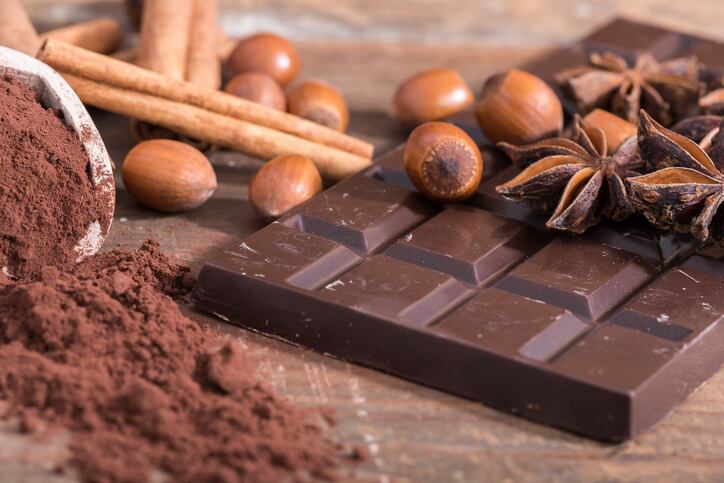When manufacturers roast and process peanuts to make peanut butter, the papery red skins are discarded. However, these skins contain 15% phenolic compounds by weight, making them ‘a potential goldmine’ of antioxidant bioactivity.
"The idea for this project began with testing different types of agricultural waste for bioactivity, particularly peanut skins," explained Dr Lisa Dean, the project's principal investigator. "Our initial goal was to extract phenolics from the skins and find a way to mix them with food."
Not only do antioxidants provide anti-inflammatory health benefits, they also help keep food products from spoiling.
But for all their positive attributes, the skins are challenging to incorporate within formulations due to their bitter flavour. In fact, the natural presence of phenolic compounds is what gives dark chocolate its bitterness, along with less fat and sugar compared to milk chocolate.
"Phenolics are very bitter, so we had to find some way to mitigate that sensation," Dr Dean elaborated.
To create their antioxidant-boosted milk chocolate, Dr Dean and her team of researchers at the US Department of Agriculture's (USDA's) Agricultural Research Service worked with peanut companies to obtain the peanut skins. From there, they ground the skins into a powder, and extracted the phenolic compounds with 70% ethanol. The phenolic powder is then combined with maltodextrin, a common food additive, to make it easier to incorporate into the final milk chocolate product.
The lignin and cellulose left behind can be used in animal feed as roughage, the research team suggested.
The researchers also extended their remit to look whether this process can be applied to other by-products, working with local coffee roasters and tea producers to obtain used coffee grounds and tea leaves, using a similar methodology to extract the antioxidants from those materials.
To taste test the milk chocolate, the researchers created individual squares of chocolate with concentrations of phenolics ranging from 0.1% to 8.1% and had a trained sensory panel taste each one.
The goal was to have the phenolic powder be undetectable in the flavour of the milk chocolate. The taste-testers found that concentrations over 0.9% were detectable, but incorporating the phenolics at 0.8% resulted in a ‘good compromise’ of a high level of bioactivity without sacrificing flavor or texture. In fact, more than half of the taste testers preferred the 0.8% phenolic milk chocolate over the undosed control milk chocolate. “This sample had higher chemical antioxidant activity than most dark chocolates,” the researchers noted.
By adding a waste stream like peanut skins to milk chocolate, the researchers believe they can provide ‘similar benefits’ as dark chocolate at a ‘fraction of the price’.
Peanut skins are not the only food waste that can enhance milk chocolate in this way; the researchers are also exploring the extraction and incorporation of phenolic compounds from used coffee grounds, discarded tea leaves and other food scraps.
The researchers said commercial availability of their boosted chocolate is still ‘a way off’ and subject to corporate patents. However, they hope that their efforts will eventually lead to a ‘better’ milk chocolate on supermarket shelves.
Looking to next steps, Dr Dean said she is hoping to test whether the antioxidants in peanut skins extend the shelf life of nut butters, which can go rancid quickly because of their high fat content.
The research is being presented today at the American Chemical Society (ACS) Fall 2020 Virtual Meeting & Expo.
Source
More healthful milk chocolate by adding peanut, coffee waste
AMERICAN CHEMICAL SOCIETY
MEETING: American Chemical Society Fall 2020 Virtual Meeting



